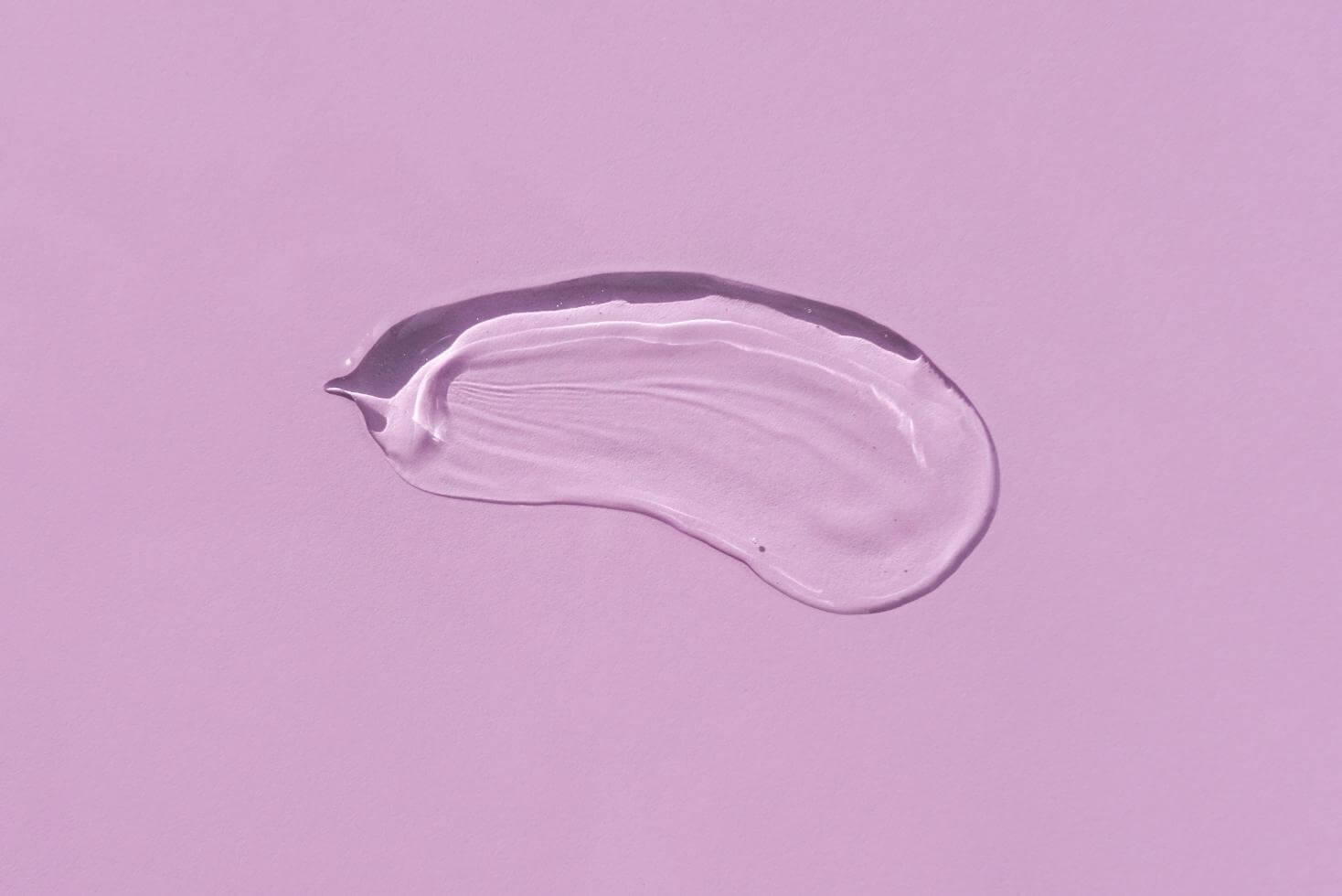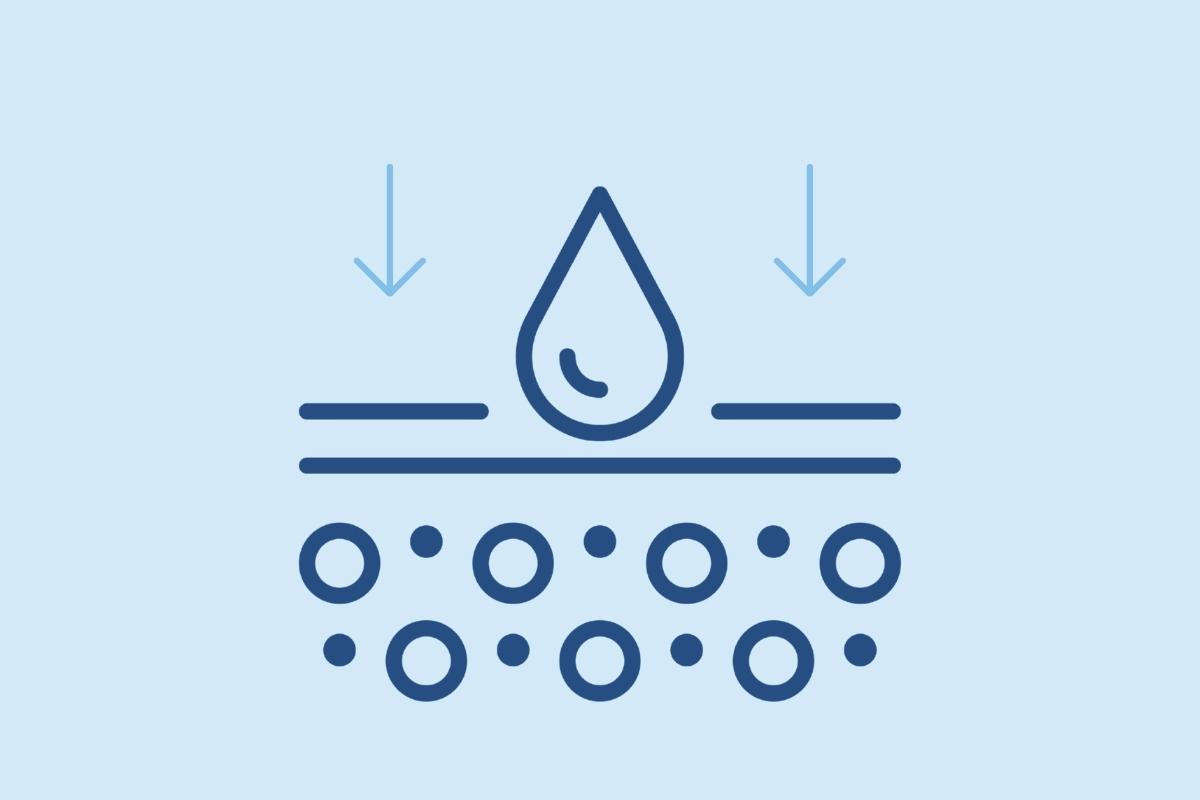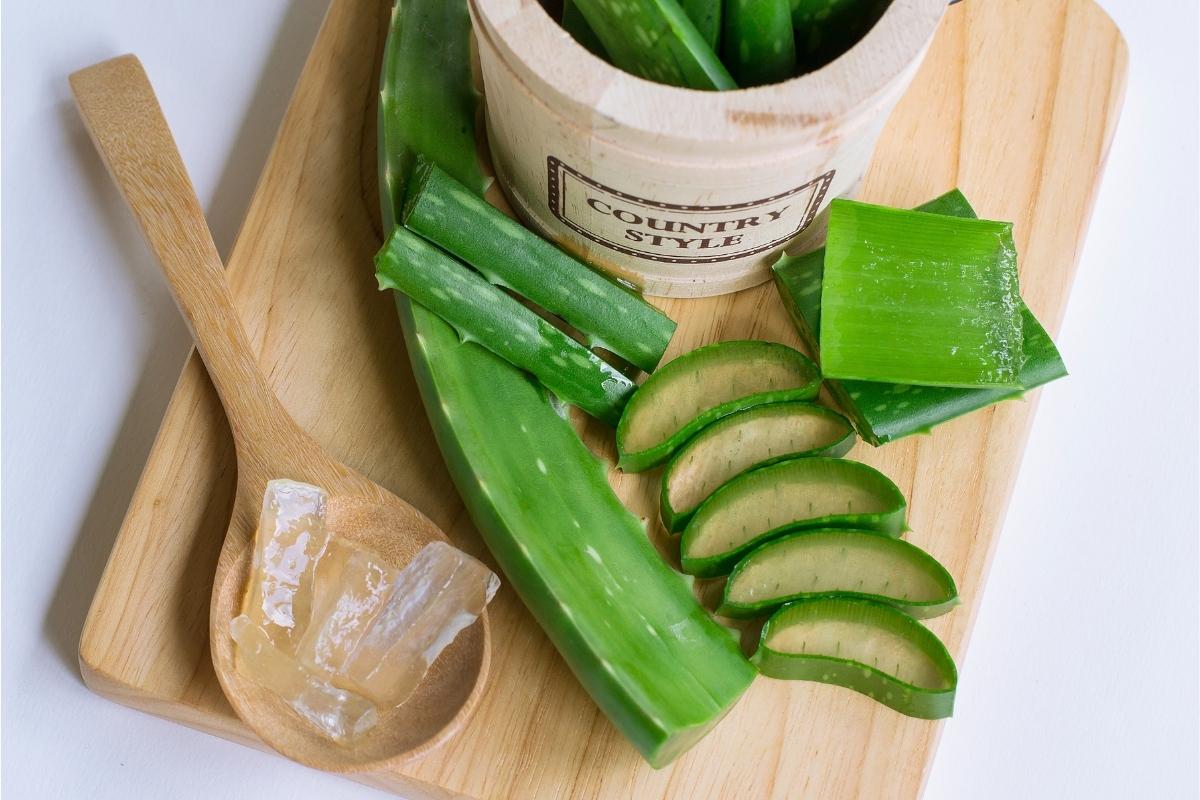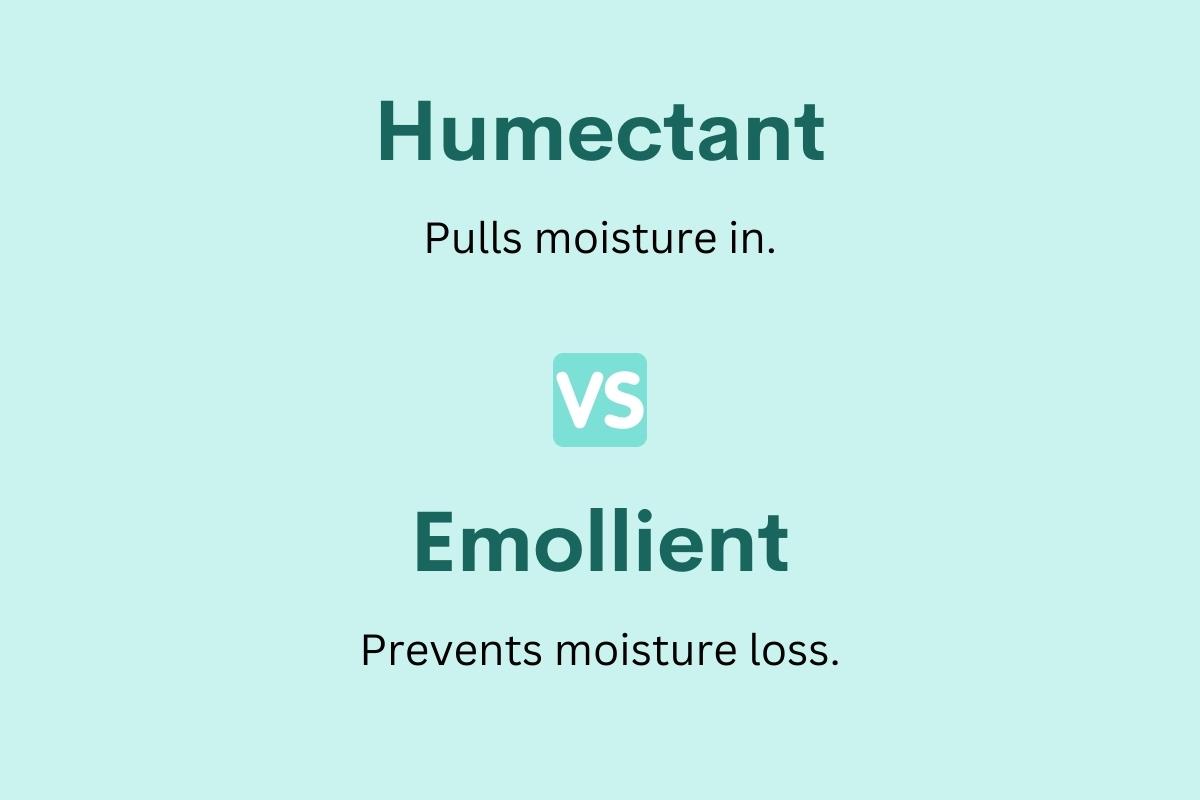Humectants for Low Porosity Hair – A Comprehensive List to Help You Pick the Right Products
Updated on
This post may contain affiliate links. As an Amazon Associate, we may earn from qualifying purchases.

Low porosity hair means hair that struggles to absorb and retain moisture. This is caused by the cuticles laying flat and tightly-packed on the hair shaft, making it almost impermeable.
The best way to inject moisture into such hair type is by using products that contain humectants, like glycerin, honey, aloe vera, and more …
This article reveals a comprehensive list of humectants for low porosity hair to help you pick the right products for maximum moisture and hydration.
What are Humectants?

Humectants are ingredients that attract and retain moisture from their surroundings. They have water-holding capacities, which makes them effective moisturizing agents. Because of their ability to bind water, humectants are often used in skincare products to help keep skin hydrated. You’ll also find them in hair products like deep conditioners, masks, and leave-ins.
How Do Humectants Work for Low Porosity Hair?
Simply put, humectants contain hydroxyl groups. They form hydrogen bonds to enhance their moisture retention and make them good adhesives.
When you apply a product with humectants to your hair, the ingredient helps to open up the cuticle and draw moisture from the environment into the hair shaft. That’s exactly what low porosity hair needs!
Humectants also help moisturize the hair by neutralizing the drying effect of the surfactants found in shampoos.
Benefits of Humectants for Low Porosity Hair
Hair porosity is essentially the metric of substance absorption (typically water), classified into 3 categories: low, medium, and high porosity.
Low porosity hair isn’t a negative feature that can’t be changed. Low porosity is a sign that your hair is healthy.
According to Trichologist Bridgette Hill, “Simply put, low-porosity hair contains a hair fiber that has overlapping cuticles. These overlapping cuticles create a barrier preventing water and moisture from penetrating.”
As a result, styling products will sit on the surface to cause product buildup instead of absorbing into the hair strands.
However, humectants can enhance the ability of your hair to absorb moisture. Hill adds, “the humectant works as the adhesive layer of moisture that is small enough to penetrate the cuticle.”
Humectants inject your hair with mineral-rich properties, giving you strong, elastic, shiny, smooth, and hydrated hair. So, look for a hair product with moisture-binding ingredients and the right amount of humectants if you have hair with low porosity characteristics.
List of Humectants
We’ve compiled a list of humectants that will make it easy for you to identify the best products that work for low porosity hair.
Without further ado, here they are …
Glycerin
Glycerin (glycerine or glycerol) is naturally found in plants and animal tissues. Even your body has it. Commercially, glycerin is primarily extracted from soybean and sugarcane. It’s one of the most commonly used humectants in hair care products, sweeteners, and soaps.
You can also mix glycerin with water as a DIY moisturizing treatment.
Panthenol
Also known as vitamin B-5, panthenol comes from natural origins and is used in low-porosity hair products to retain much-needed moisture. It also creates a smooth film over your hair cuticles, making them shiny and easy to untangle.
Panthenol also promotes the production of keratin, which is essential to strengthening the hair.
Triethylene Glycol
Triethylene glycol is a colorless and odorless viscous liquid that is completely soluble in water. It’s a type of polyethylene glycol (PEG), and it’s hydrophilic, which makes it an indispensable ingredient in skin care and hair care cosmetics.
Erythritol
This humectant is used in sweeteners and has a conditioning nature. To illustrate, it puts the cells of hair cuticle tiles in their place to smoothen the outer structure.
Phtantriol
Phtantriol is a type of alcohol used in various beauty products and cosmetics. It’s a humectant that targets the hair shaft and deep conditions the hair, enhancing texture, reducing hair breakage, and preventing split ends.
Sorbitol
Sorbitol is one of the sugar alcohols used as a sugar substitute. This humectant not only locks moisture into your scalp but also cleanses by binding to dirt and oils. It won’t leave you with dry hair or infections as it is considered a mild surfactant.
Butylene Glycol
Here’s another alcohol that draws in moisture and helps with deep conditioning. Butylene glycol is typically made from distilled corn and used in shampoos, conditioners, lotions, sunscreen, sheet masks, cosmetics, anti-aging serums, and hydrating serums. Also, butylene glycol keeps a product’s other ingredients, pigments, and dyes from getting clumpy.
1,2,6-Hexanetriol
Humectants attract moisture, and 1,2,6-Hexateriol is no different. Aside from retaining water content, it’s a solvent. So, if it’s used in a product, the humectant can help other ingredients dissolve. It adjusts the viscosity of cosmetics.
Ethylene Glycol
Ethylene glycol is derived from vegetables. You’ll find it in shampoos, deep conditioners, creams, and lotions like other humectants.
The humectant helps with nourishing your hair, giving it volume and enhancing its bounce with improved elasticity. This way, low porosity hair doesn’t dry out and feel stiff. Also, the ingredient’s non-comedogenic nature prevents it from clogging the pores, causing product build-up.
Propylene Glycol
Propylene glycol is extracted from vegetable oils, such as coconut and grapeseed. You may spot it in shampoos, deep conditioners, and many other styling products.
This widely used humectant strengthens and softens your hair strands, retains your curls, provides slip for detangling, and doesn’t leave any residue. However, some people may be allergic to it.
Hexylene Glycol
Hexylene glycol is another humectant that your hair could benefit from, as it has moisturizing and cleansing properties. It gives low porosity hair products the desired consistency. However, this solvent can cause adverse reactions, so we’d recommend you check that it won’t irritate your scalp.
Dipropylene Glycol
Dipropylene glycol is a solid humectant and hair care product stabilizer. In other words, the compound draws moisture into low porosity hair so it doesn’t feel brittle or dry. It also adds more shelf life to hair products.
Sodium Lactate Acid
Like other salts of lactic acid, Sodium Lactate Acid is a multifaceted humectant moisturizer often found in lotions, creams, personal care products, shampoos, makeup products, dyes, conditioners, and even food (because it can act as a preservative). As a conditioning agent, it helps low porosity hair stay hydrated for longer.
Natural Humectants in Hair Products

Besides synthetic chemicals, manufacturers employ some natural humectants in hair products. These plant-based ingredients combine some extra benefits for keeping your hair moisturized.
Here’s the list:
Aloe Vera Gel
First on our natural humectants list is aloe vera gel. Try rubbing your hair with this raw gel and watch how it penetrates and conditions it.
Aloe vera can also deep cleanse an oily scalp, removing other products’ residue and excess natural oils (sebum). Additionally, it’s an emollient with soothing qualities, helping you with itchiness.
Rich in amino acids, proteins, iron, potassium, and calcium, aloe vera is also low pH, which makes it ideal for rebalancing the pH of the hair and scalp.
Coconut Oil
Coconut oil is somewhat divisive because it’s one of the heavy oils with a thickness that may prevent it from penetrating tight hair cuticles. So, use small amounts, and apply them to the ends of your hair as needed.
Castor Oil
Rich in vitamin E and fatty acid oils, castor oil hydrates the hair and fights dandruff. However, it’s almost as heavy as coconut oil, which is why castor oil works best as a final layering step (after other humectants penetrate your hair). Otherwise, using it alone may cause your hair to get sticky and flaky.
Grapeseed Oil
Compared to coconut and castor oil, grapeseed oil is light and thin in consistency, so it can permeate the hair cuticle layer without leaving any residual coating. This humectant works as an excellent conditioner, as it helps with frizzy hair and minimizes damage. It also adds gloss to the hair.
Jojoba Oil
Jojoba oil is much like the natural oil your scalp produces (sebum).
It is a light oil that can lubricate low porosity hair without weighing it down. Thanks to its protein, you can keep your hair hydrated, help it grow, stop dryness and breakage, and give it an incredible shine. So, you see why it’s constantly listed in shampoo, conditioner, sunscreen, and moisturizer products.
Olive Oil
Since low porosity hair requires light-penetrating oils, olive oil isn’t a great option. As it settles onto your hair strands, it can cause buildup. However, olive oil adds softness and prevents split ends into medium and high porosity hair textures.
Argan Oil
Argan oil is rich in nutrients and vitamins. It locks in moisture, nourishing low porosity hair. It also promotes hair growth, fights frizz, and adds shine and smoothness to the hair.
Although it may not be effective in penetrating low porosity hair, argan oil can be layered with humectants in other conditioning products for its extra benefits.
Shea Butter
Low porosity hair can benefit from shea butter, as it’s rich in vitamins A and E and fatty acids, which nurture your strands, fight frizz and supply the hair with plenty of moisture. Also, its lipids bind to humectants, which fill any open spaces your shampoo may leave. For best results, use it as a second moisture layer.
Sunflower Oil
Sunflower oil is a light oil humectant. It’s rich in vitamin E and antioxidants that help to neutralize free radicals damage. It also prevents dandruff and itchiness, makes hair more manageable, and can be used to seal split ends.
Avocado Oil
Avocado oil can be a good humectant for your low porosity hair, as it can penetrate the hair fiber deeper than thick oils. Then, it can seal in moisture, prevent damage, promote hair growth, and make the hair easy to detangle.
Like shea butter, avocado oil works great as a second conditioning layer as it binds to other humectants to fill open spaces on the hair’s surface.
Mango Butter
We love mango seed butter for its rich moisturizing value. Just look at all these nutrients! You’ve got vitamins C, E, and A. So, you can imagine how that can nurture your hair.
Jojoba Butter
Jojoba butter has long been used to treat skin and scalp problems, boost hydration, and enhance hair growth. With anti-inflammatory properties, the butter can soothe your scalp and control itchiness. It’s also hypoallergenic, which is excellent news for people with allergies.
Flaxseed Gel
Flaxseed gel is a humectant, meaning it helps to retain moisture in the hair. This makes it an ideal treatment for dry and damaged hair. It can be made at home by soaking flaxseeds in water overnight, then blending them into a gel-like consistency. You can then apply the gel to your hair and leave it in for 30 minutes to help seal in moisture and give your locks some shine.
Marshmallow Root
Marshmallow root creates natural mucilage, a thick gel-like substance that helps hydrate and soothe the skin. It is a film-forming humectant that provides instant hydration.
“Mucilage is basically a plant-based carbohydrate found in the root of the plant which draws water into the hair.” Dr. Kavita Mariwalla
New York-Based Board-Certified Dermatologist - Shape
Nettle Extract
Nettle extract has many beneficial properties for controlling excessive sebum production that can be caused by dryness of the scalp. Nettle extract is also astringent and anti-inflammatory.
A humectant is often confused with another term known as emollient. Below, I explain the difference between the two.
Humectant vs. Emollient

What is an emollient, and how is it different from a humectant?
Derived from the Latin word ’emollire’, an emollient is a substance that treats dryness by preventing moisture loss.
A humectant attracts moisture. An emollient prevents moisture from escaping.
Some examples of emollients are vegetable oils, sweet almond oil, Cetyl Alcohol, Lanolin,
Emollients can exist independently in cosmetics, but combining them with humectants gives you smooth and moisturized hair.
After all, emollient-heavy-based formulas are oil-based. They soften your hair but sit on your scalp and cause product build-up.
So, water-based film-forming humectants are better suited for low porosity hair than emollients since they can penetrate it.
Final Thoughts
Ultimately, humectants mean less breakage and split ends, helping your hair grow and shine, precisely what you need in your low porosity hair care journey!
About the Author
 Kassidy Ward
Kassidy WardKassidy Ward is our curly girl expert and has been following the Curly Girl Method for over 3 years. She's tried just about every product and technique out there to get her curls to cooperate and is always on the lookout for new products to try.
She's also a sucker for free products, which is why she's relentlessly reaching out to manufacturers with her unique persuasive skills. 9 out of 10 times, she wins!